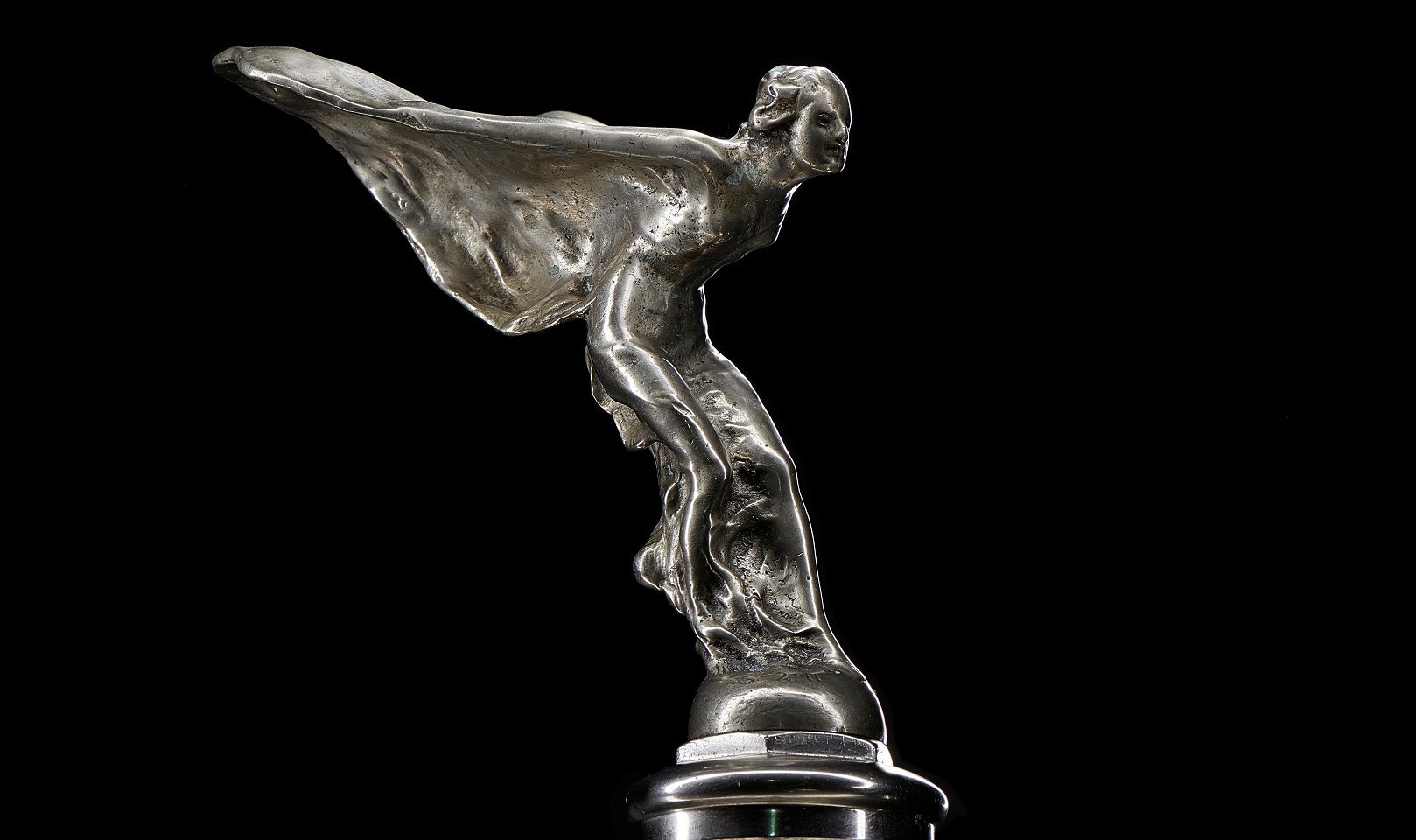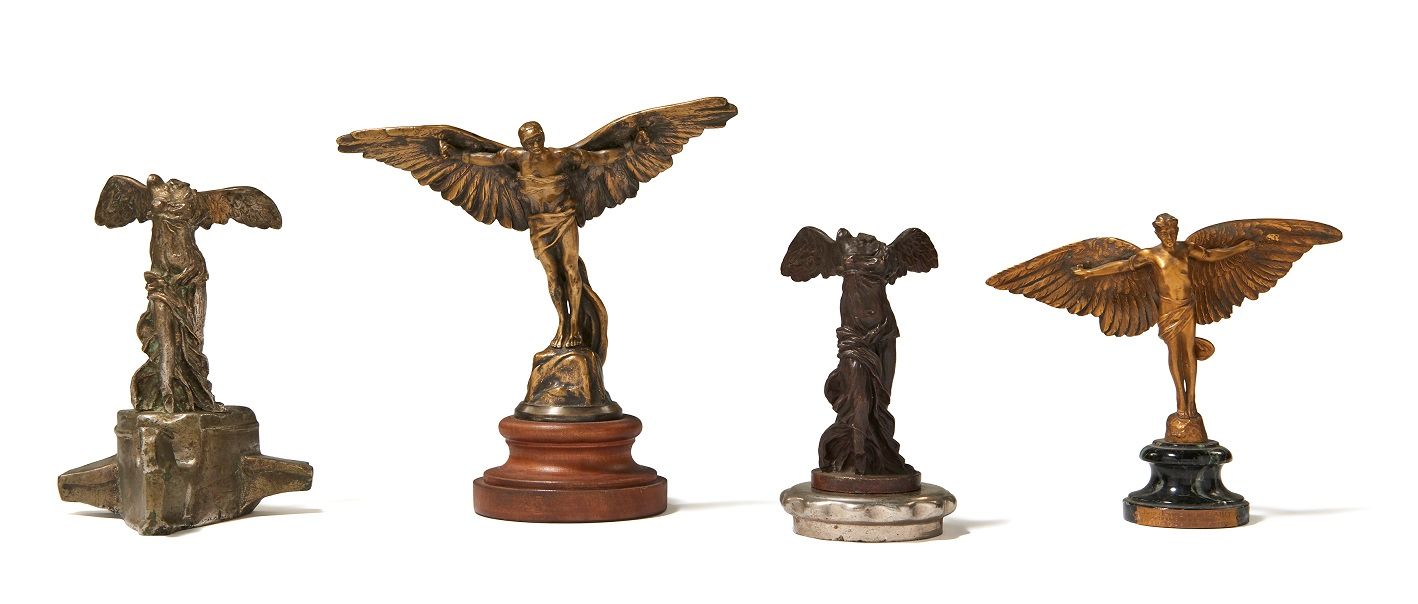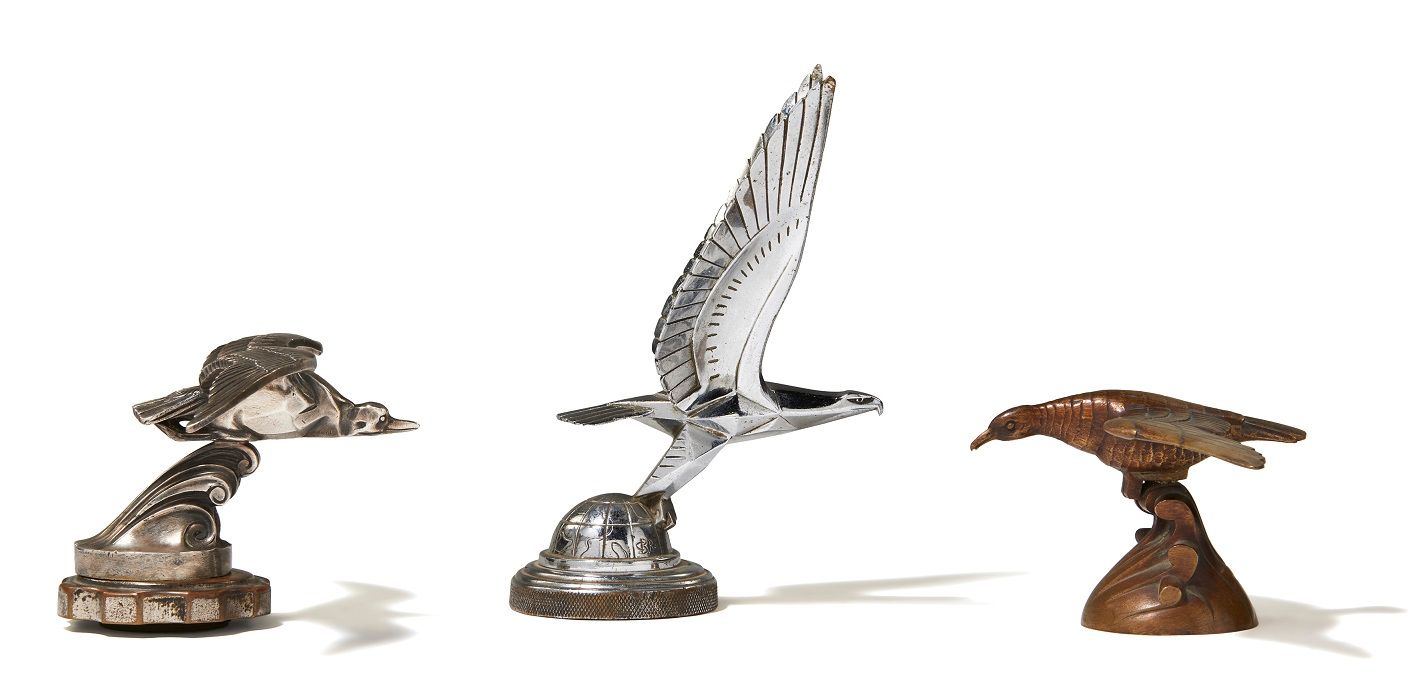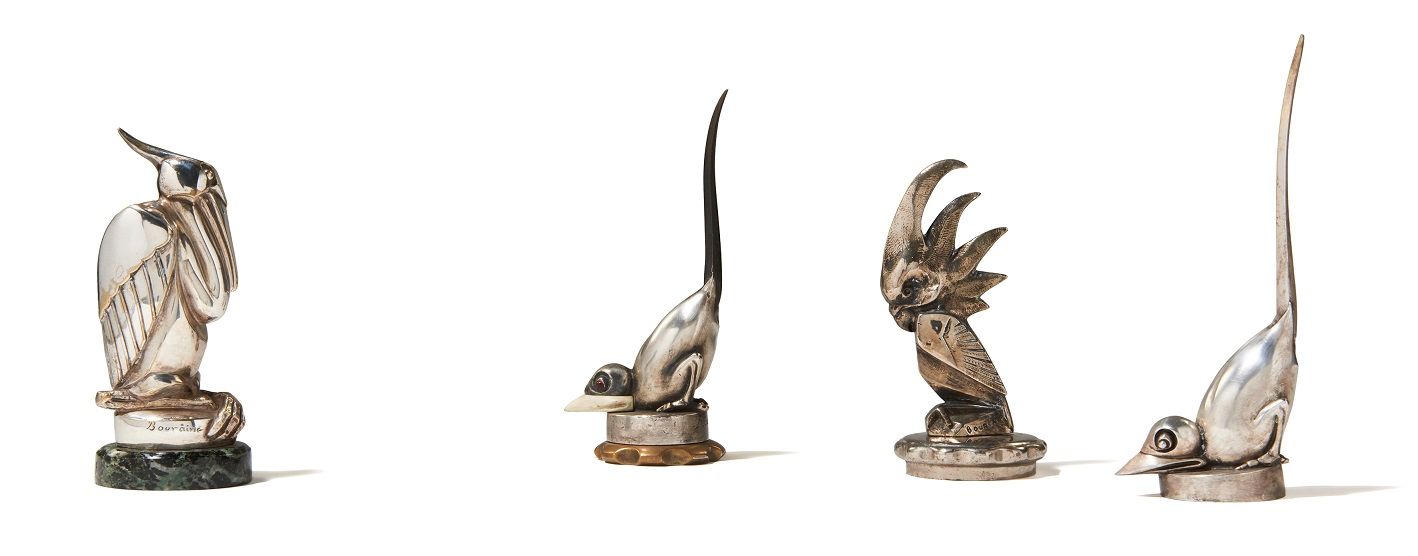Personalise Your Car With These Vintage Hood Ornaments
Images: Artcurial Motorcars
That flying lady on the prow of the Parthenon-inspired grille is arguably the most famous hood ornament ever—synonymous with the car that certain enthusiasts consider one of the best in the world, Rolls-Royce.

Known as the Spirit of Ecstasy, it’s the car mascot statuette of the Rolls-Royce brand and was created in 1911 by the English sculptor Charles Sykes to embellish the brand's radiator caps.

The statuette represents a young woman leaning forward, her arms thrown back and her clothes flowing with the wind in a form that resemble wings.

Lord Montagu of Beaulieu, a great patron of Rolls-Royce, commissioned his friend, the painter and sculptor Charles Sykes, to create a car mascot for his car, called “The Whisper” that showed a young woman with her clothes blowing in the wind and a finger on her lips.


John Montagu’s secretary since 1902, Eleanor Thornton (who became his mistress), was the inspiration for the hood ornament and the finger on the lips symbolised their secret arrangement. Thornton once again was the model for the Spirit of Ecstasy. But that is a story for another time.

This article is about all the car mascots and hood ornaments which were available as aftermarket accessories during the pre-War period, and which were common adornment for the prow of automobiles then. Car mascots generally symbolised the brand of the car, often using its logo.

For instance, the radiator cap of Peugeots had a stealthily creeping lion, and that of Jaguar, a leaping jaguar.

But sculptors and car mascot manufacturers produced a series of aftermarket statuettes, which were bought by car owners who then replaced the one provided by the manufacturer, by the one they fancied.


The “exposed radiator cap became a focal point for automobile personalisation,” wrote Michael Karl Witzel in his book Route 66 Remembered.

The materials that made up these car mascots and hood ornaments were most varied: brass, zinc, glass, bronze, and silver-plated bronze, as well as coatings in nickel, even the occasional one in gold.

Unsurprisingly, the French took the lead in conceptualising and making high quality car mascots. Sculptors like François Bazin, Gaston Broquet and Alexandre Auguste Caron came up with some brilliant designs for hood ornaments and these were made and sold by Darel, Casimir Brau, DIM, Jean Doré and others.

The most coveted hood ornaments though were those by French artist René Jules Lalique, who designed and made beautifully crafted glass car mascots. By 1932 Lalique was offering 27 different models of car mascots for the most luxurious cars of the period.

The rarest and the most sought-after car mascots are the fox, the owl, the comet, the peacock’s head, and the ram’s head, with these vintage hood ornaments fetching very fancy prices today.

The production of car mascots was extensive in the United Kingdom too: Louis Lejeune, a company founded as a small foundry in 1910 in London, offered as many as 60 dog mascots by the 1930s.

Desmo in 1937 created the car mascots for the SS 100 Jaguar. Other companies that made hood ornaments were Elkington and Red Ashay.

With the onset of mass motorisation post-WWII, hood ornaments were rarely attached to new vehicles. One reason for this—in addition to the production costs—was the safety aspect: in accidents with pedestrians, the hood ornament often caused serious injuries.

By the 1970s most countries in Europe and the Unites States had banned the use of protruding, fixed car mascots.

To address these safety requirements, the Mercedes-Benz stars used until recently had a mechanism that ensured that the star folded down (but does not break off) on pressure.

Rolls-Royce still provides a smaller Spirit of Ecstasy car mascot in its current model line-up, but the statuette can be retracted at the push of a button. They are also equipped with sensors, and they automatically move down into the radiator grille when touched and are thus protected against theft.

Very popular as collectibles today, the values and prices of all these vintage hood ornaments have been on the up. In 2017, French auction house Artcurial Motorcars auctioned more than 400 vintage hood ornaments on one day, when Vincent Saja’s collection was put on the block.

The images in this article are of vintage hood ornaments that used to belong to the Vincent Saja collection.




Based in Sens, in the heart of Burgundy, Saja designs and manufactures pocketknives featuring impeccable finish and quality.

Using high-end material, Saja’s knives are often machined from titanium and the handles are crafted from carefully chosen wood. Guess, craftsmanship of such a nature appreciates the craftsmanship of a bygone era.
Comments
Sign in or become a deRivaz & Ives member to join the conversation.
Just enter your email below to get a log in link.

